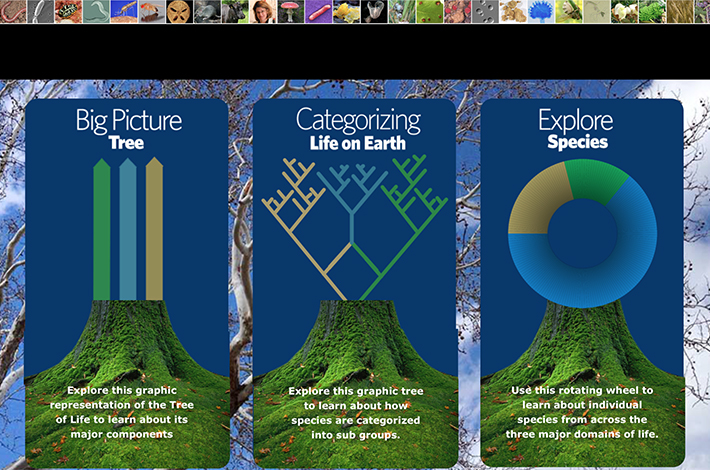Researchers have released a first draft of the “tree of life” for the roughly 2.3 million named species of animals, plants, fungi and microbes.
The project is a collaborative effort among 11 institutions, including researchers from the George Washington University. It depicts the relationships among living things as they diverged from one another over time, tracing back to the beginning of life on Earth more than 3.5 billion years ago.
Tens of thousands of smaller trees have been published over the years for select branches of the tree of life—some containing upwards of 100,000 species—but this is the first time those results have been combined into a single tree that encompasses all of life. The end result is a digital resource that is freely available online for anyone to use or edit, much like a “Wikipedia” for evolutionary trees.
“It turns out that evolutionary history is really essential for understanding all kinds of key puzzles in biology,” said Keith Crandall, a co-author of the draft and director of the GW Computational Biology Institute. “It provides insights into disease transmission patterns and has been used to interpret and predict impacts of climate change on plants, animals and microbes.”
The findings were published recently in the Proceedings of the National Academy of Sciences. The current version of the tree, along with the underlying data and source code, is available to browse and download.
This initial comprehensive draft is based on nearly 500 smaller trees from previously published studies, but the vast majority of evolutionary trees are published as PDFs and other image files that are impossible to enter into a database or merge with other trees.
As a result, the relationships depicted in some parts of the tree, such as the branches representing the pea and sunflower families, don’t always agree with expert opinion.
Other parts of the tree, particularly insects and microbes, remain elusive.
“Putting all the species of the planet together in a single evolutionary history is really the centerpiece of biodiversity science,” Dr. Crandall said. “Now, we have a framework to take advantage of previously splintered knowledge joined through the OpenTree project into a single Tree of Life.”
This research was supported by a three-year, $5.76 million grant from the U.S. National Science Foundation and was led by Karen Cranston, bioinformatics project manager at Duke University.
Other study co-authors include Christopher Owen, a post-doctoral scientist at GW’s Computational Biology Institute.


